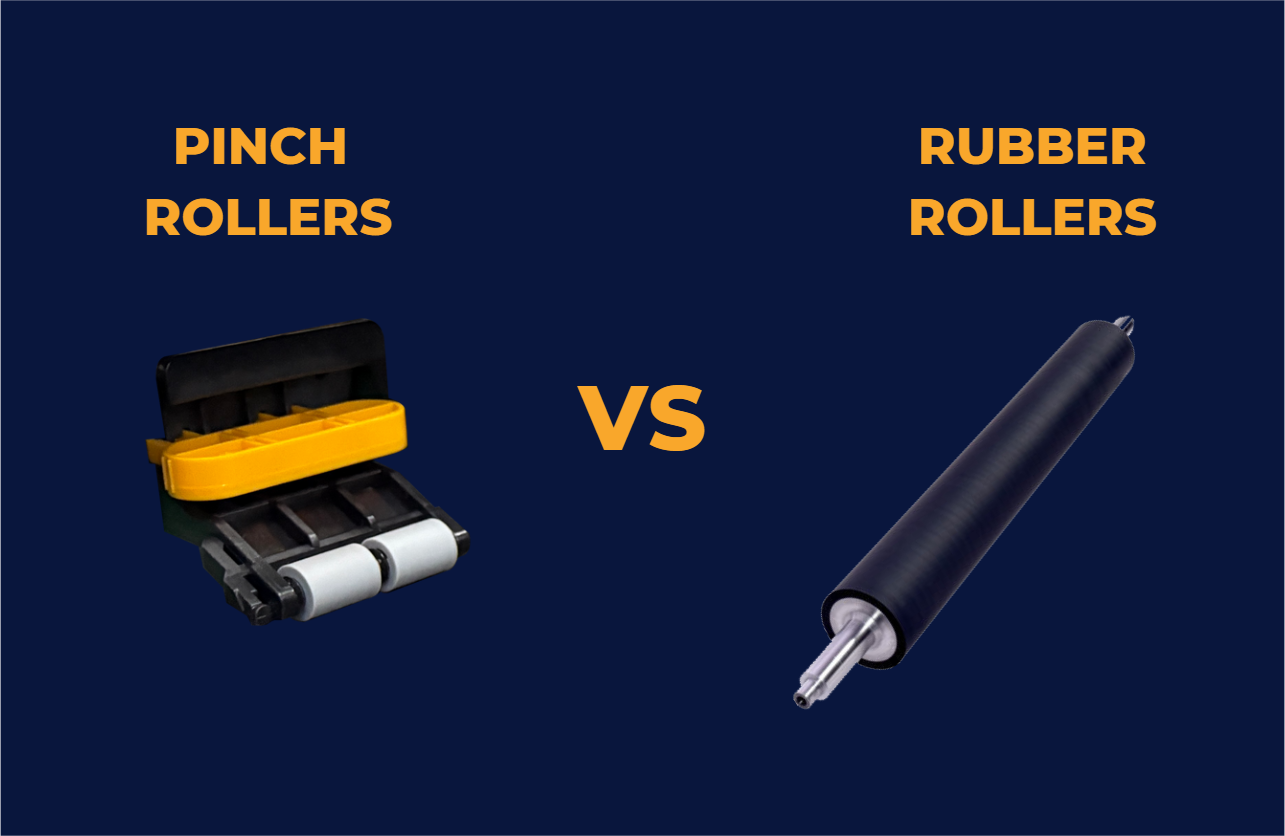In the world of digital textile printing, particularly for high-volume production, the choice of components like media handling systems is critical. A common question arises: what is the difference between rubber rollers and pinch rollers, and what does their use indicate about a printer’s technology? Understanding this distinction is key to selecting the right equipment for your needs, especially when considering advanced solutions from manufacturers like Fedar.
First, it’s important to clarify a potential misunderstanding in terminology. The “rubber rollers” referred to in high-performance contexts are often sophisticated, driven roller systems that actively propel the fabric through the printer. In contrast, “pinch rollers” are typically smaller, passive wheels that guide the media and maintain tension. Both play distinct roles in modern printing.

The performance of rubber rollers significantly impacts the entire printing process. They are not simple components; they impose strict requirements on manufacturing quality and material science. The rubber roller drive system is primarily employed in large-scale wide format printer and digital textile printer platforms characterized by long printing paths and high operational frequencies.
On large printing equipment exceeding speeds of 480 sqm/h, such as those designed for efficient production on fabrics for apparel and home textiles, these advanced rubber rollers demonstrate exceptional advantages. Their robust design ensures precise and stable media transport, which is crucial for maintaining registration and print quality at high velocities. The material quality is paramount. For instance, some high-end printers utilize specialized compounds like imported fluorine rubber. These advanced materials not only ensure smooth, wrinkle-free substrate transport but can also be engineered with conductive properties to prevent static electricity buildup, which can cause ink splash or attract dust . This level of engineering is essential for a high-performance sublimation printer where any media slippage or distortion can ruin an entire print batch.
This does not render pinch rollers or paper feed wheels obsolete. For small to medium-sized printing equipment operating at speeds below 480 sqm/h, these components are fully competent. Systems like paper feed wheels are effective for handling various media in printers with shorter paper paths .
Their continued use offers several practical benefits:
Lower Equipment Costs: The mechanisms for pinch rollers are generally less complex and expensive to manufacture than large, driven rubber roller systems.
Reduced Maintenance: They are often easier to access, clean, and replace. Maintenance procedures can be as simple as cleaning the rollers with isopropyl alcohol to restore grip .
Cost-Effective for Specific Applications: For many businesses, the performance demands do not justify the investment in a full industrial roller system. Pinch rollers provide a reliable and economical solution.
A leading manufacturer like Fedar understands that there is no one-size-fits-all solution. Their approach to designing textile printing printers involves selecting the optimal media handling system for the intended use case.
For their heavy-duty models, such as the FD1924 or high-speed digital textile printers designed for continuous production, Fedar employs advanced rubber roller systems. These are engineered to work in harmony with other precision components, such as Epson printheads, to ensure that the mechanical transport system can keep up with the incredible print speeds without compromising the droplet placement accuracy. The rigid frame and calibrated platform of such printers are crucial to supporting this system .
Conversely, for other models in their portfolio designed for different market segments, a well-engineered pinch roller system may be the perfect choice to achieve a balance of performance, reliability, and cost-effectiveness.
Using rubber rollers does not mean a printer is outdated; in fact, it often signifies that the printer is built for industrial-grade, high-speed performance. The question is not about superiority but about application suitability.
Choose a printer with an advanced rubber roller system if your primary need is high-speed, high-volume production on a wide format printer or digital textile printer, where maximum uptime and registration accuracy are critical.
Printers utilizing pinch rollers or feed wheels remain highly relevant for a wide range of applications where speed demands are lower, and operational cost efficiency is a priority.
Ultimately, companies like Fedar develop a range of textile printing printers to cater to these diverse needs, ensuring that businesses can find the right technology to empower their growth, whether it’s for sublimation printer applications on polyester or direct-to-fabric printing on natural fibers.